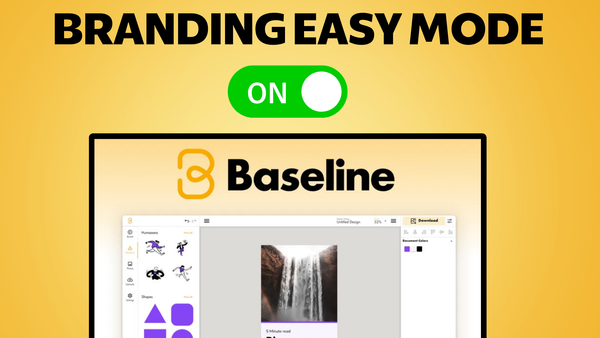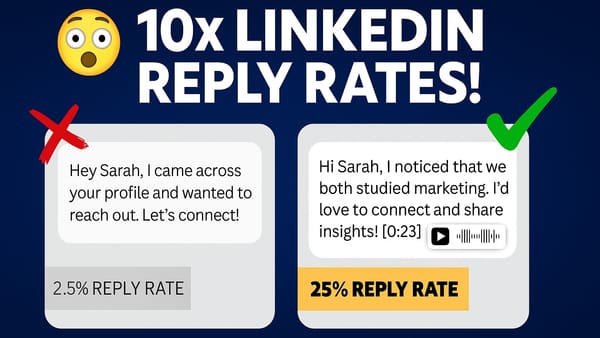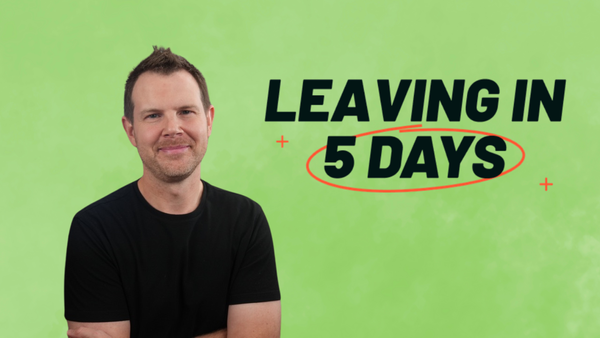The Anatomy of A WordPress Page [WPME 3/16]
Discover the essential components of a WordPress page, from headers to posts vs pages, in this comprehensive guide for beginners and experts alike.
![The Anatomy of A WordPress Page [WPME 3/16]](/content/images/size/w1200/wordpress/2024/09/anatomy-of-wordpress.jpg)
Introduction
WordPress, the world’s most popular content management system, offers a versatile platform for creating websites. However, for those new to WordPress or coming from other platforms, understanding its structure can be crucial for a smooth experience. This comprehensive guide will explore the anatomy of a WordPress page, breaking down its key components and explaining how they work together to create a functional and attractive website.
In this detailed breakdown, we’ll cover the essential elements of a WordPress page, including the header, body content, and footer. We’ll also discuss the difference between pages and posts, two fundamental content types in WordPress. Whether you’re a beginner looking to build your first website or an experienced user seeking to refine your WordPress skills, this guide will provide valuable insights into the platform’s structure and functionality.
By the end of this article, you’ll have a clear understanding of how WordPress pages are constructed, how to modify different elements, and how to choose between pages and posts for your content. Let’s dive in and demystify the anatomy of a WordPress page!
Intro [00:00]
When approaching WordPress for the first time, it’s essential to set aside any preconceived notions about website builders or content management systems. WordPress has its unique way of organizing and displaying content, which may differ from other platforms you’ve used before. To get the most out of this guide and your WordPress experience, it’s crucial to approach the learning process with an open mind.
Key points to remember:
- WordPress may differ from other website builders you’ve used before
- Preconceptions about website structure can lead to frustration
- An open-minded approach is crucial for learning WordPress effectively
- Understanding the basic structure of a WordPress page is fundamental to mastering the platform
- This guide will break down the essential components of a WordPress page
By keeping an open mind and following along with this guide, you’ll be well-equipped to navigate the WordPress ecosystem and create stunning websites that meet your specific needs.
Header [00:31]
The header is a crucial component of any WordPress website, serving as the first impression for your visitors and providing essential navigation elements. Let’s explore the header in detail and understand its significance in the overall structure of a WordPress page.
Key features of a WordPress header:
- Site branding: The header typically contains your site name or logo, establishing your brand identity
- Primary navigation: It houses the main menu, allowing visitors to easily navigate your website
- Consistent presence: By default, the header appears on every page of your site
- Customization options: WordPress allows for header customization, including the ability to create unique headers for specific pages
Importance of a well-designed header:
- Creates a strong first impression for visitors
- Improves user experience by providing easy navigation
- Reinforces brand identity across all pages
- Helps maintain consistency throughout the website
Customization possibilities:
- Changing header layout and design to match your brand aesthetics
- Adding dynamic elements like search bars or call-to-action buttons
- Implementing responsive design for mobile compatibility
- Creating unique headers for different sections of your website
Understanding the role and functionality of the header is crucial for creating a cohesive and user-friendly WordPress website. As you continue to explore WordPress, you’ll discover various ways to customize and optimize your header to best serve your site’s purpose and your visitors’ needs.
Body Content [00:50]
The body content is the heart of your WordPress page, containing the main information, media, and interactive elements that visitors come to see. This section is where you’ll showcase your blog posts, create compelling sales pages, display photo galleries, or present any other content relevant to your website’s purpose.
Understanding body content in WordPress:
- Flexibility: WordPress allows for various content types, from text and images to videos and interactive elements
- Customization: The body content area can be styled and formatted to match your brand and message
- Responsive design: Content in this section adapts to different screen sizes for optimal viewing on all devices
- SEO optimization: Body content plays a crucial role in search engine optimization efforts
Key elements of effective body content:
- Clear and engaging headlines
- Well-structured paragraphs for easy readability
- Relevant images, videos, or infographics to support your message
- Call-to-action elements to guide user engagement
- Internal and external links to provide additional value and improve SEO
Best practices for creating compelling body content:
- Focus on providing value to your audience
- Use a mix of content types to keep visitors engaged
- Implement proper formatting for easy scanning (e.g., subheadings, bullet points)
- Optimize content for search engines without sacrificing readability
- Regularly update and refresh your content to keep it relevant
Understanding how to effectively utilize the body content area is crucial for creating a successful WordPress website. Whether you’re crafting informative blog posts, designing eye-catching product pages, or building an engaging portfolio, mastering this aspect of WordPress will help you deliver a superior user experience and achieve your website goals.
Pages vs Posts [01:32]
One of the fundamental concepts in WordPress is the distinction between pages and posts. While both are used to display content on your website, they serve different purposes and have unique characteristics. Understanding the difference between pages and posts is crucial for organizing your content effectively and ensuring optimal user experience.
Pages: Evergreen Content
Pages in WordPress are designed for content that remains relatively static and doesn’t have a specific publication date associated with it. These are ideal for information that visitors will refer to frequently or that forms the core structure of your website.
Key characteristics of pages:
- No published date displayed
- Typically appear in the main navigation menu
- Ideal for evergreen, timeless content
- Can be organized hierarchically (parent and child pages)
- Examples include About Us, Contact, Services, or FAQ pages
Best practices for using pages:
- Use clear, descriptive titles that reflect the content
- Organize pages logically in your site’s navigation
- Keep content up-to-date, even if it’s considered “evergreen”
- Utilize page templates for consistent design across similar pages
Posts: Timely and Dynamic Content
Posts are designed for more dynamic, date-specific content. They are typically used for blog entries, news updates, or any content that is part of a chronological stream of information.
Key characteristics of posts:
- Display a publication date
- Appear on the blog page or post archive in reverse chronological order
- Can be categorized and tagged for easy organization
- Generally do not appear in the main navigation menu
- Ideal for timely content, updates, or entries in a series
Best practices for using posts:
- Write compelling titles that encourage clicks
- Use categories and tags to organize content effectively
- Engage with readers through comments (if enabled)
- Share posts on social media to increase visibility
- Consider using excerpts to entice readers to click through to the full post
Choosing Between Pages and Posts
When deciding whether to create a page or a post, consider the following:
- Longevity of the content: Is it timeless information or time-sensitive?
- Navigation: Should it be easily accessible from the main menu?
- Updates: Will the content need frequent updates or remain mostly static?
- Organization: How does it fit into your overall site structure?
By understanding the distinction between pages and posts, you can create a well-organized WordPress site that provides a seamless user experience and effectively communicates your message to visitors.
Key Takeaways
As we conclude our exploration of the anatomy of a WordPress page, let’s recap the essential points and insights we’ve covered. Understanding these fundamental aspects of WordPress will empower you to create and manage your website more effectively.
- Open-minded approach: When learning WordPress, it’s crucial to approach the platform with an open mind, setting aside preconceptions from other website builders. This mindset will help you adapt to WordPress’s unique structure and functionality more easily.
- Basic structure of a WordPress page:
- Header: Contains site branding and primary navigation, appearing on every page by default.
- Body content: The main area where your content is displayed, including text, images, videos, and other media.
- Footer: Appears at the bottom of every page, typically containing secondary navigation, copyright information, and additional links.
Header importance:
- Creates a strong first impression
- Provides essential navigation
- Maintains consistency across your site
- Can be customized for specific pages or sections
Body content:
- The heart of your WordPress page
- Flexible and customizable to suit various content types
- Plays a crucial role in user engagement and SEO
- Should be well-structured and optimized for readability
Pages vs Posts:
- Pages: For evergreen, static content that doesn’t have a specific publication date
- Posts: For timely, dynamic content that is part of a chronological stream
- Understanding the distinction helps in organizing your content effectively
Best practices for content creation:
- Use clear, descriptive titles
- Implement proper formatting for easy scanning
- Regularly update and refresh content
- Optimize for search engines without sacrificing readability
Customization possibilities:
- WordPress offers extensive options for customizing headers, footers, and page layouts
- Themes and plugins can extend functionality and design options
- Responsive design ensures your site looks great on all devices
Content strategy:
- Choose between pages and posts based on the longevity and purpose of your content
- Use categories and tags to organize posts effectively
- Consider the user journey when structuring your site’s navigation
By mastering these concepts, you’ll be well-equipped to create a WordPress website that not only looks great but also provides an excellent user experience. Remember that WordPress is a powerful and flexible platform, and continuous learning will help you unlock its full potential.
As you continue your WordPress journey, don’t hesitate to explore advanced topics, experiment with different plugins and themes, and stay updated with the latest WordPress developments. With practice and persistence, you’ll be able to create stunning websites that effectively communicate your message and achieve your online goals.
For more in-depth WordPress tutorials and productivity software reviews, be sure to subscribe to our channel and check out our other resources. Happy WordPress building!
🌐 Web: https://clientamp.com
📘 Facebook: http://facebook.com/groups/daveswift
🐦 Twitter: https://twitter.com/davidswift




